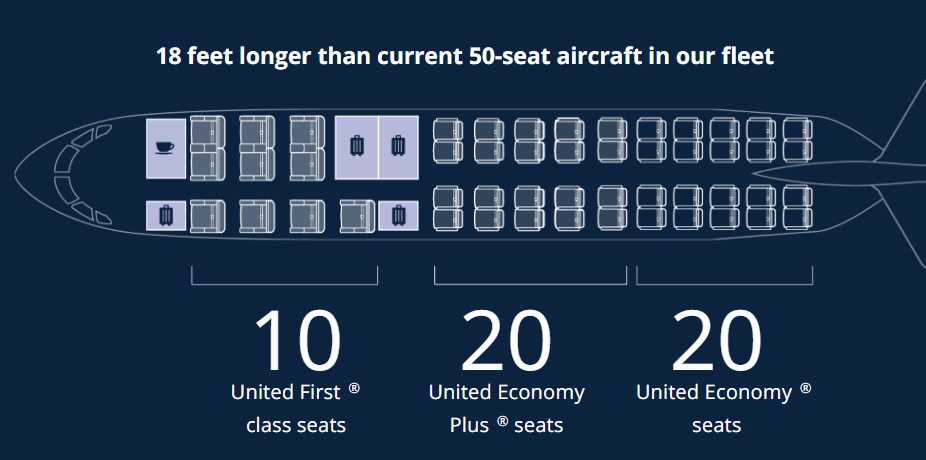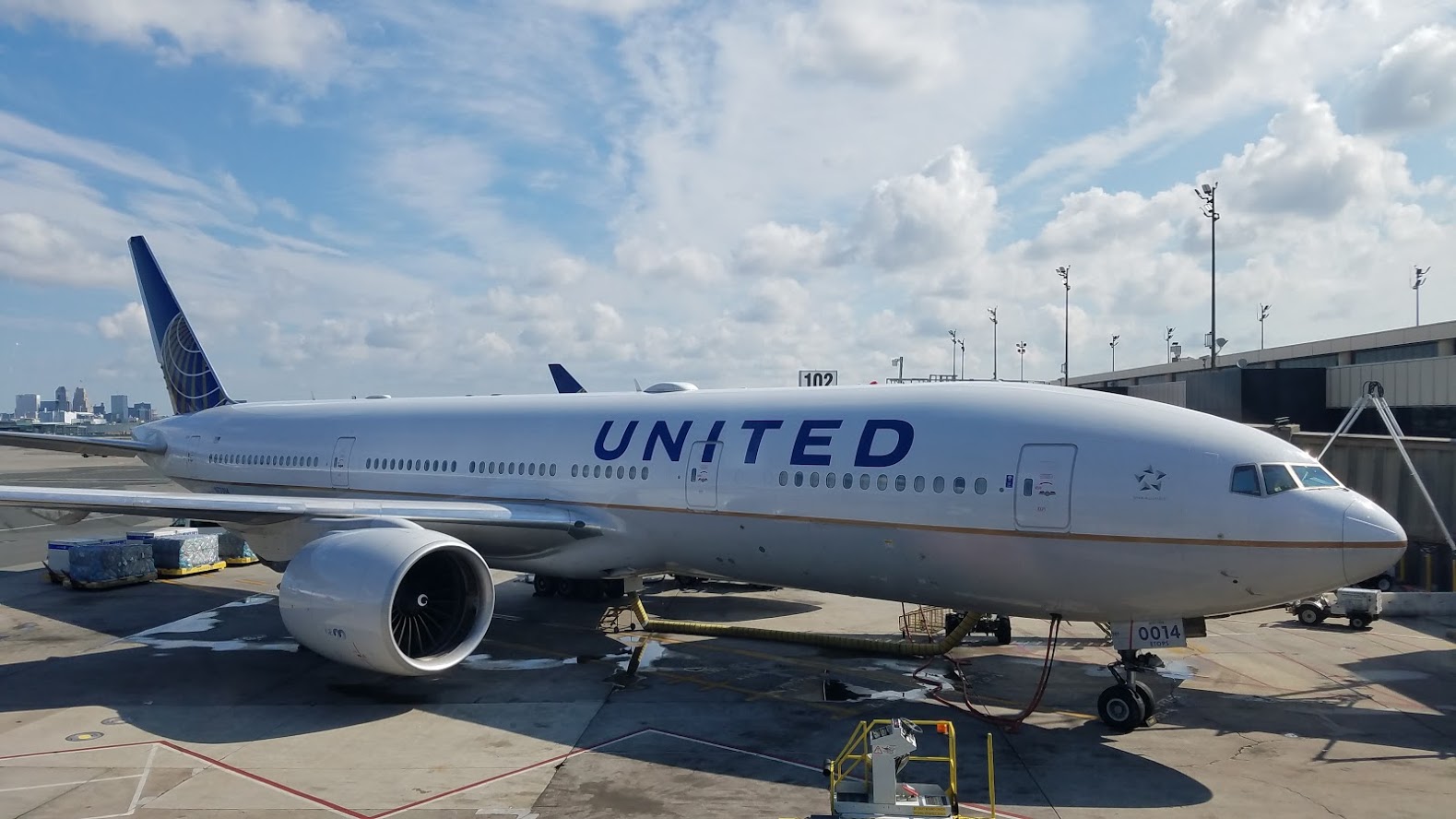Union pilot contracts are complicated and detailed. There are wage and quality of life issues to negotiate but also what’s called “scope.” That’s how much flying an airline can do under their regional or ‘express’ brand.
Pilots could negotiate the highest wages in the industry by far, but it wouldn’t matter if they don’t have planes to fly. If the airline they work for can outsource to a lower cost provider like SkyWest, Republic, or Mesa to fly as Delta Connection, American Eagle, or United Express then it won’t much matter. That’s why ‘scope clauses’ are so important to pilots.
The Focus of United’s Negotiations With its Pilots is on Regional Jets
Pilots are especially concerned with limiting regional jet flying (and more generally, flying under an airline’s brand by another carrier).
That’s grown to include concern over flying by joint venture partners where an airline shares revenue with another airline — American, for instance, coordinates prices and schedules and shares revenue with British Airways, Iberia, and Finnair across the Atlantic.
The fear there is that growth comes from the partner, and there are either fewer pilot jobs at their airline or growth is experienced elsewhere.
United’s current scope clauses are especially limiting. There are specific limits on the number of 50, 70, and 76 seat planes that can be flown under the United Express banner.
- United is maxed out on 76 seaters, with SkyWest, Republic, and Mesa operating a total of 100 Embraer E-175s.
- They have 105 regional jets with 70 seats – including half Embraer E-175s and half Bombardier CRJ-700s. United would certainly fly the E-175s that have 70 seats today with 76 seats if their pilots contract allowed it.
The number of 50 seat regional jets is capped at “90% of United’s narrowbody jets” meaning the airline could fly up to about 500 of those, but only flies 300. This is an aircraft type (for example, the CRJ-200) that’s grown out of favor and isn’t really broadly available.
United’s New Premium 50 Seat Regional Jets are a Stalking Horse
United’s solution to scope clause limits on larger regional jets is the CRJ-550, a CR7 that might have 70 seats with only 50. It’s a premium-heavy configuration (10 first class, 20 economy plus, and 20 economy seats) that fits within their current scope clause.
- With extra room they add closets for bag storage
- And since 50 passengers only require one flight attendant, there’s a self-serve beverage and snack station for first class passengers

I viewed this plan as a stalking horse for a new union contract. The premium-heavy regional jet could actually work on some routes, the jury isn’t in yet, but the airline wouldn’t be doing this if they weren’t constrained by the pilots contract.
Pilots Want More Guarantees to Allow More Higher Capacity Regional Jets
Ideally pilots would love all flying to be done by their union members. That’s not happening. So they want to ensure their jobs are protected and that growth happens at the mainline (so more pilot jobs, and opportunity for members to advance to the left seat).
Currently outsourced flying is limited based on the number of narrowbodies in the United fleet, and there’s no requirement to grow widebodies in order to grow regional flying.
The union says they’re concerned “[m]anagement can park literally all of our mainline widebody aircraft, and up to 160 of our narrowbodies, and they would still not be required to remove one single [regional jet] from Express service.” What the union seems to be worried about is a recession. They’re looking to protect their downside as much as capture upside.

In a recession United could park planes where there’s not demand for air travel. United pilots want there to be too high a consequence for that (reduced regional flying, too — where regional flying could make even more sense than mainline narrowbody flying during a recession).
So far though the pilots union is optimistic,
“We continue to have productive discussions with management, which is somewhat unique for us and indicative of a positive process,” says ALPA’s letter. “We remain confident that a path to improvement exists that simultaneously meets our goals of mainline growth and protects our pilots from an economic downturn.”
Why Passengers Lose Whether There’s a New Contract or Not
While American Airlines certainly learned that mechanics can slow down an airline, no work group can stop one the way that pilots can even without a strike. That was abundantly clear to United after “The Summer From Hell”. So no pilot contract is bad for customers because it means massive delays and cancellations.
However in this case a pilot contract is also bad for customers because it’s almost certain to mean flying denser regional jets, squeezing a couple more rows of seats into existing planes and perhaps walking back the plane to run planes that can hold 70 passengers with just 50. There’s no reason future CR7 deliveries have to be in a 50 seat configuration, and planes they take with 50 seats can be reconfigured.


Remembering the costly pilot strikes in the 1980s with Continental and United; in 2000 with the pilot slowdown at United, if the pilots had vision, they would appeal directly to the flying public, the consumers of United:
-It’s one thing to fly a regional jet between ORD-Cedar Rapids, but who wants to be on one over long distance routes, e.g., ORD-BOS, ORD-DEN, etc? The issue of comfort is relative.
-Deftly point out the experience differential between a mainline pilot and regional pilots.
-Play to the majority of flyers who do not embrace the character of Gordon Gekko; instead, do not favor the outsourcing or downgrading of jobs
Or we can say “to hell with United and their greedy pilots who want $300 k a year to work 80 hours a month” and pick another airline. I did. No regrets.
@Rjb – Aren’t all US3 (plus WN) pilot salaries about the same?
I wonder if the waitress union will oppose the self service beverage station.
I wouldn’t mind a CR7 packed with 70 seats if that helps to get rid of the awful CRJ-200s!
The argument that it’s a lose if pilots get a contract because CRJ550 will be walked back is weak. Seems like a grab for a sensational headline.
CRJ550 is just a work around to offer a first class seat in markets where competitors are bigger RJs. Customers would be better served by a 70 seat RJ with 2 flight attendants than a 50 seater with extra coat closets. If the new UPA allows more 70 seats RJs United will be able to do premium service the right way on RJ routes. It would also likely mean more main line flying.